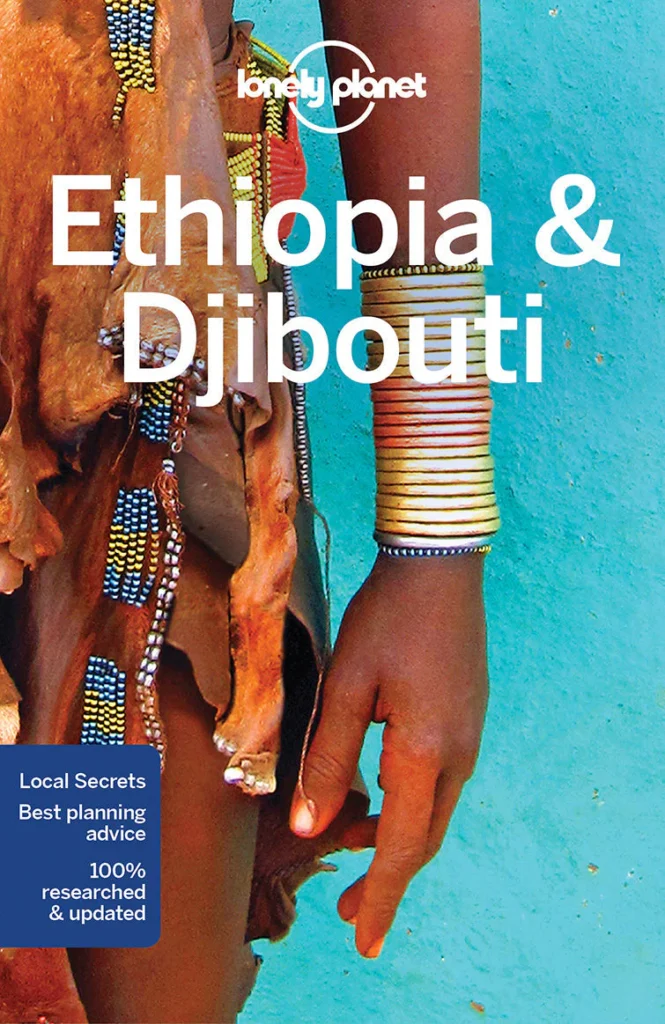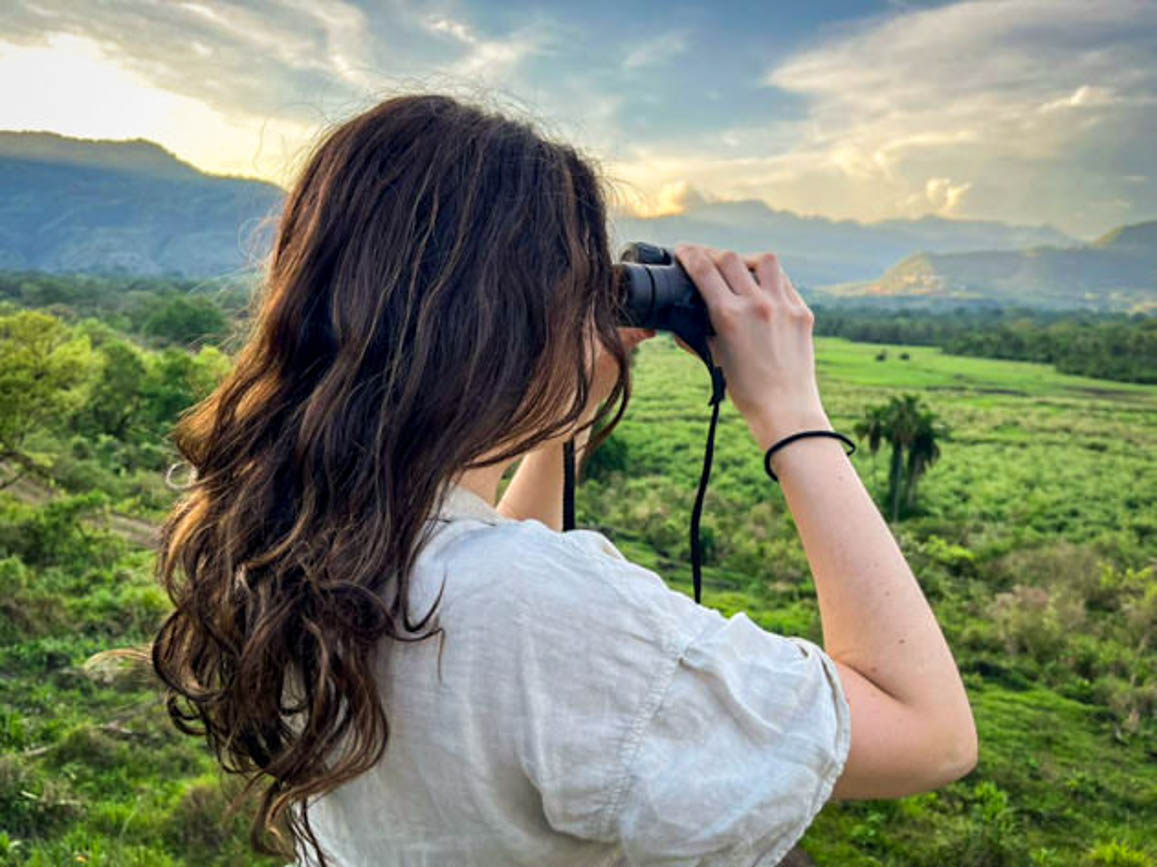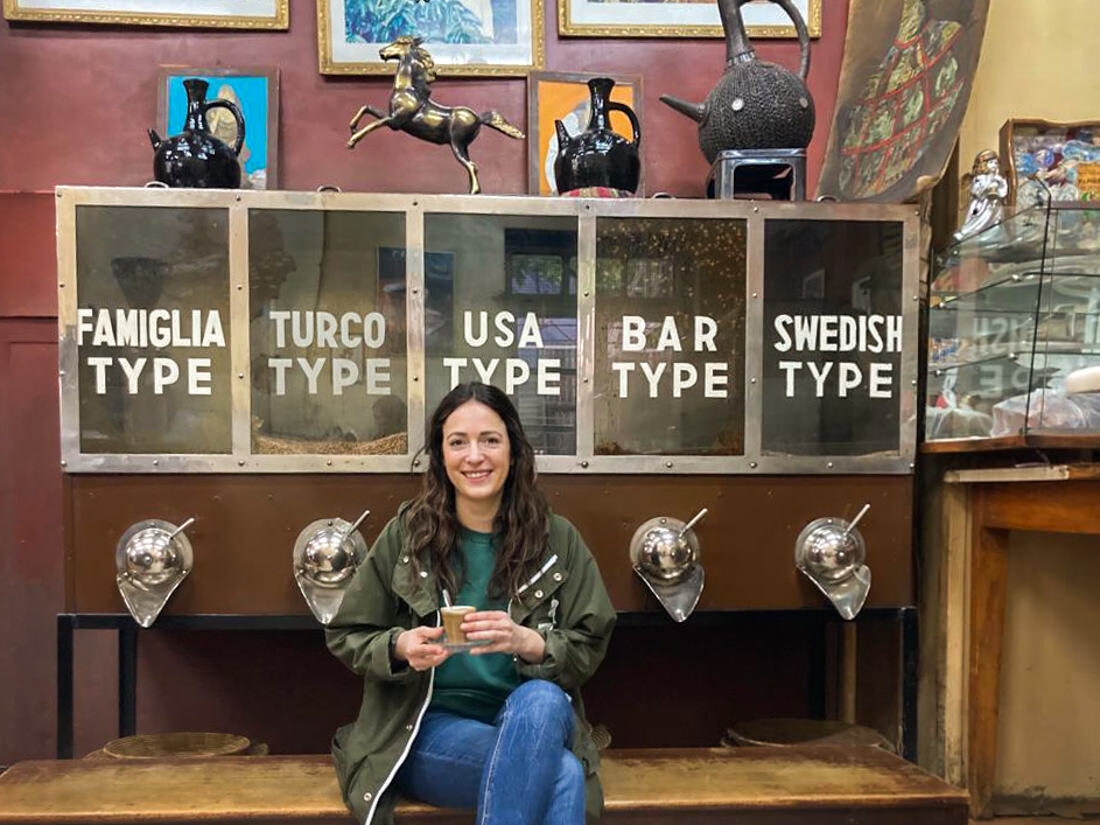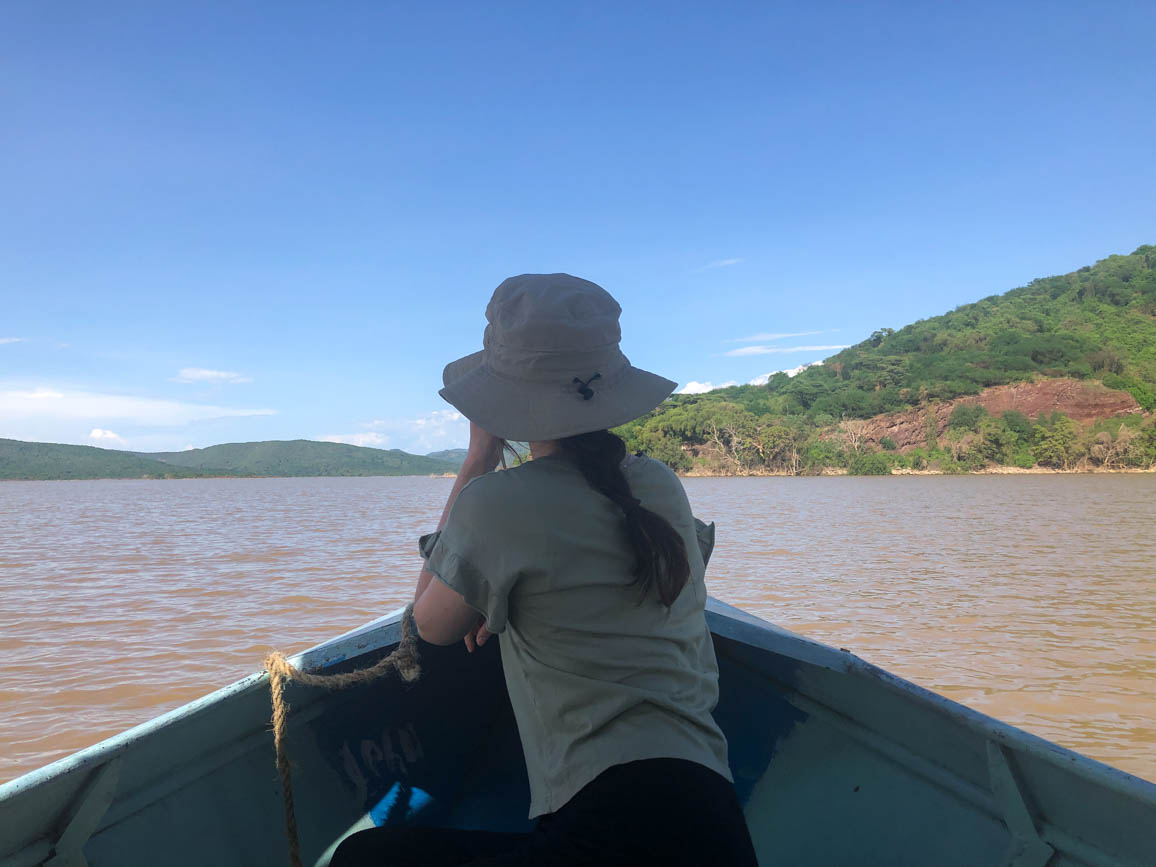
After traveling throughout Ethiopia for two weeks, I thought it was time to reflect on the trip and share my favorite experiences. To be honest, it was an intense visit filled with mixed feelings, a couple of episodes of food poisoning and lots of culture, history and traditions to digest. That being said, it was a memorable journey. In this post, I´ll be sharing my seven Ethiopia trip highlights, including, in my view, some of the best things to do in the country. If you´re planning to explore this African destination soon, this should give you a good idea of what to expect. Are you ready to dive in?
***
Disclaimers:
- I visited Ethiopia with three girlfriends during the months of March and April 2023. This post features the latest information available to this date.
- Please note that this publication includes some affiliate links. This means that, at no additional cost for you, I earn a commission if you make a purchase. In case you have any question about the companies advertised here or my status as an affiliate, please do not hesitate to contact me.
- 📸 You can find my Ethiopian stories and adventures under these folders on Instagram (Ethiopia, Ethiopia II, Ethiopia III).
- 🎵 Listen to my Ethiopia playlist on Spotify while you read this post to feel like you´re literally there.
***
Throughout the trip, I used this Ethiopia & Djibouti guidebook by Lonely Planet to plan our stay and make the most out of it. I hope you’ll find it helpful too!
You can learn in more detail about Ethiopia and our 15-day itinerary by heading to the resources below, including a destination page with helpful tips to plan your trip to this African country as well as comprehensive posts detailing all the stages of our adventure. The seven Ethiopia trip highlights described in this post were my favorite experiences out of the whole journey.
Browse my Ethiopia destination page for more content about this fascinating country!
Ethiopia itinerary in 2 weeks & travel tips
Exploring southern Ethiopia: ethnic tribes of the Omo Valley & safaris in national parks
Lalibela, a mystical UNESCO World Heritage site
What to do in Addis Ababa, the bustling capital of Ethiopia
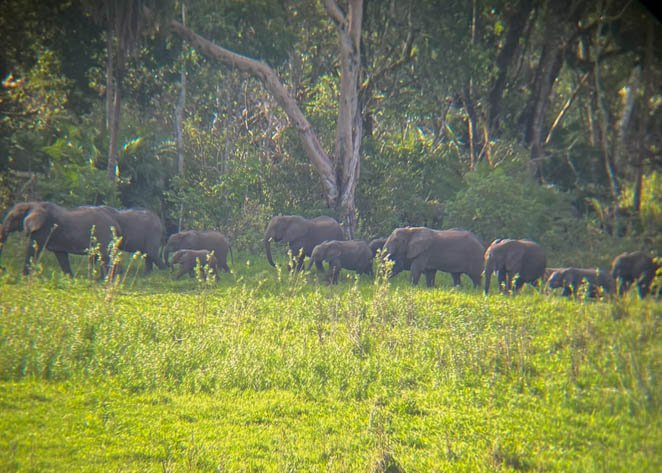
🐘💚 🦩 Spotting Ethiopia´s wildlife in national parks: my safari highlights
Without a doubt, going on safaris and seeing wildlife in the national parks of Ethiopia ranks first on my list of top experiences to do in the country. From elephants and monkeys, to Guinea fowls and other colorful birds, the variety of species was incredible and it was breathtaking to spot them in their own habitat. This was my first time going on a safari and I absolutely loved it. Being surrounded by wild animals in the middle of a vast national park was truly magical; what an epic experience!
When we explored southern Ethiopia, we visited a total of five national parks: Chebera-Churchura National Park, Maze National Park, Mago National Park, Nech Sar National Park and Abyata-Shalla National Park. Many of these parks offer safaris as part of their activities, and visitors can choose a given number of so called ‘game drives’ focused on viewing wildlife during the safari itinerary. These outings typically take place early in the morning or towards the evening since animals tend to be less active during the day. Read my safari travel tips for more information.
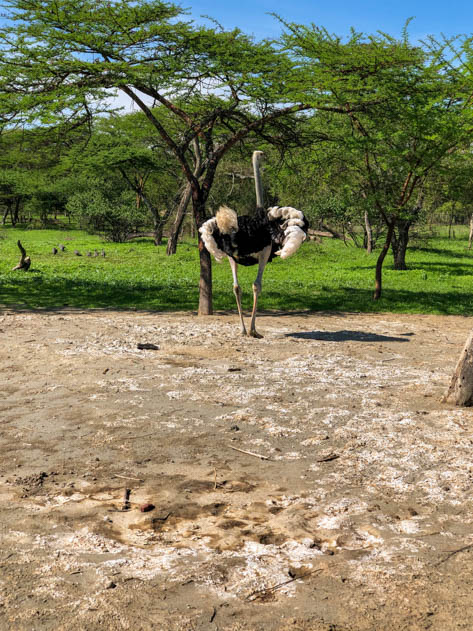
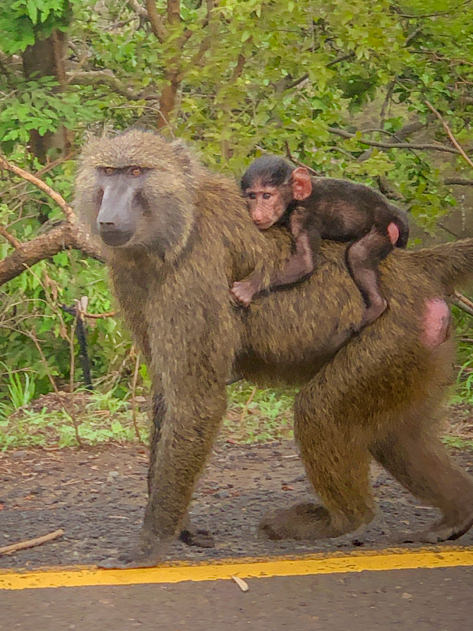
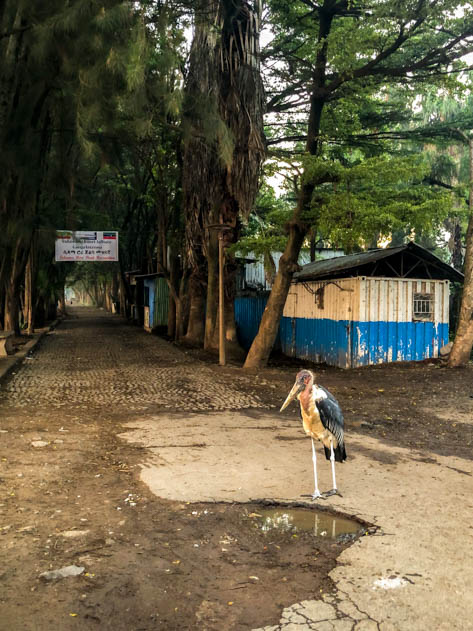
Below, I have detailed all the animals, sorted by category, that we saw during our trip throughout the south of Ethiopia and in which location we spotted them.
| ANIMAL | CATEGORY | LOCATION |
|---|---|---|
| 🐘 African elephant (including baby elephants) | Mammal | Chebera-Churchura National Park |
| Baboon | Mammal | Chebera-Churchura National Park |
| Baya weaver (their elaborate nests are very peculiar) | Bird | Mago National Park |
| Bee eater | Bird | Mago National Park & near the Kara tribe in Turmi |
| 🦬 Buffalo | Mammal | Chebera-Churchura National Park |
| Bulbul | Bird | Mago National Park |
| 🐒 Colobus monkey | Mammal | Mago National Park |
| Dik-dik | Mammal | Mago National Park |
| 🦩 Flamingo | Bird | Abyata-Shalla National Park |
| Gazelle | Mammal | Abyata-Shalla National Park |
| Guinea fowl | Bird | Mago, Maze & Abyata-Shalla National Parks |
| 🦛 Hippopotamus | Mammal | Chebera-Churchura & Nech Sar National Parks |
| Hornbill | Bird | Near the Kara tribe in Turmi |
| Kingfisher | Bird | Mago National Park |
| Marabou stork | Bird | Hawassa |
| 🐊 Nile crocodile | Reptile | Nech Sar National Park |
| Oribi | Mammal | Maze National Park |
| Ostrich | Bird | Abyata-Shalla National Park |
| 🐦⬛ Raven | Bird | Chebera-Churchura National Park |
| Roller | Bird | Maze National Park |
| Starling | Bird | Maze National Park |
| Swayne’s hartebeest | Mammal | Maze National Park |
| 🐒 Vervet monkey | Mammal | Negash Resort in Wolliso |
| Warthog | Mammal | Chebera-Churchura & Abyata-Shalla National Parks |
Read to learn more about my experience with safaris in national parks across southern Ethiopia.

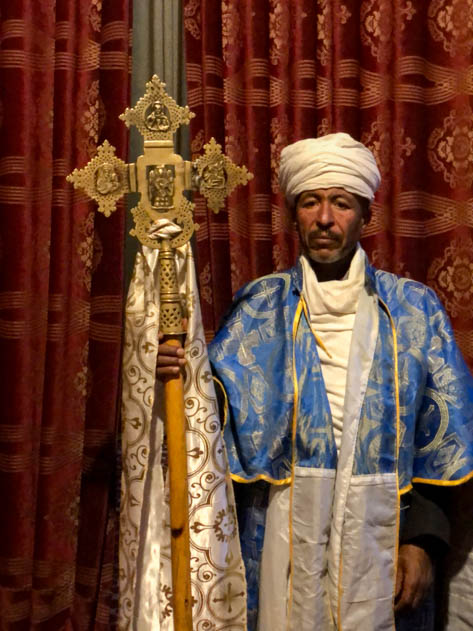
☦️ Discovering the roch-hewn Lalibela churches, a must-visit UNESCO World Heritage site
The holy city of Lalibela, located in the northern part of Ethiopia, treasures a series of ancient rock-hewn churches that are considered a UNESCO World Heritage site. Considered one of the holiest cities in the country (and in the African continent), chances are you´ve already seen some pictures on the Internet. But I can tell you from personal experience that they don´t make it justice. You just have to visit Lalibela to believe your own when wondering at the incredible architecture and stumbling upon Orthodox pilgrims and monks. The whole atmosphere there is truly mystical!
Read my post about Lalibela for further information.
Excavated completely in the rock and built underground for defensive reasons, the fascinating rock-hewn monolithic churches of Lalibela are a major pilgrimage site for Ethiopian Orthodox Christians, who flock here especially to mark religious celebrations. This city is a great place to dive deeper into the intricacies of religion in Ethiopia.
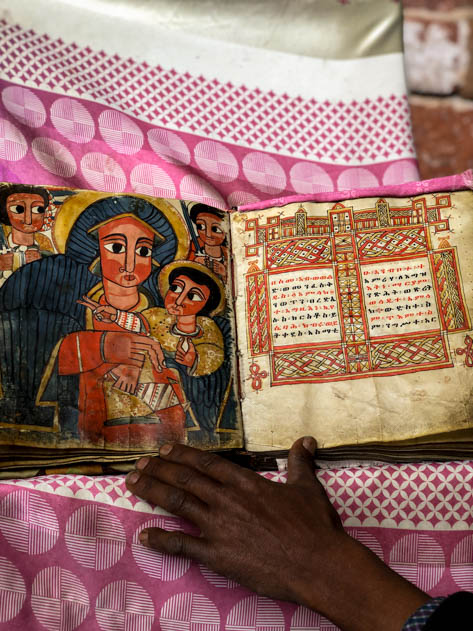
There are a total of eleven rock-hewn churches in Lalibela, the most iconic one being Bete Giyorgis. Carved in a 30-meter deep trench and built on three floors, Bete Giyorgis is exceptionally well preserved. When visiting inside this Lalibela church, pay attention to the narrow windows, the large crosses on the ceiling and a 16th century painting depicting Saint George killing a dragon.
During our stay, we got the chance to visit seven out of the eleven churches in two days. But in addition to the famous Lalibela churches, I recommend you also visit some of the ancient monasteries you will find in the area. For example, when we were there, we stopped by the Na’akuto La’ab monastery.
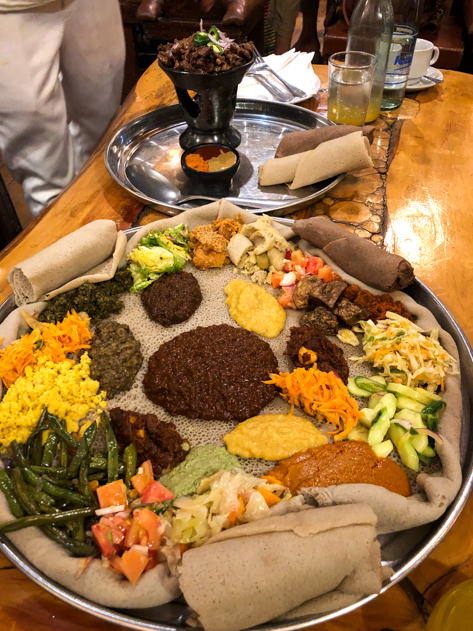
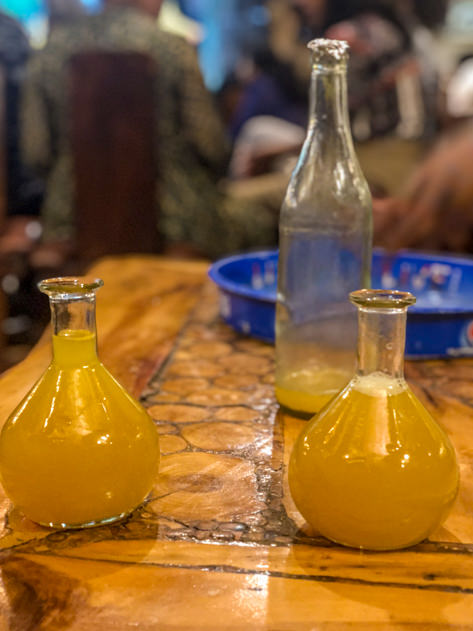
👩🍳 Tasting the Ethiopian cuisine and attending a cooking class
Third on my list of Ethiopia trip highlights is the unique Ethiopian food.
Indeed, food and coffee are an integral part of the Ethiopian culture. Given their importance and how much I enjoyed discovering both, I have listed them separately.
If you’re wondering what the most popular food in Ethiopia is, my short answer would be injera, a sourdough spongy flatbread the size of a pizza pan that goes with pretty much anything you can think of, from sauces and stews to meat. It´s a staple food you will likely eat every day when you´re visiting the country. Note that Ethiopians use their hands when sharing this traditional food from communal plates.
Because of religious observance, the Ethiopian cuisine is mainly vegan. Also, chances are that Muslim and/or Orthodox Ethiopians could be fasting during your trip (take Ramadan or Lent, for example). To be honest with you, coming from Spain, I thought it would be difficult for me to hold two weeks eating fully vegan and without even trying pork. But surprisingly, the experience of eating injera mostly every single day was easier than I expected. 🙂 And most of the times, you can also find pasta or plain rice in restaurants in case you feel like eating something ‘different’.
If you’re curious about Ethiopian food in general and which traditional dishes you should order, I suggest you browse the food section on my Ethiopia destination page. Some of the most famous ones include doro wat, gomen or shiro.
In my view, the traditional restaurant Yod Abyssinia in Addis Ababa is probably one of the best places to get introduced to the Ethiopian cuisine and folklore. Not only do they serve all kinds of Ethiopian food and drinks including injera or honey wine (tej), but they also do so while you enjoy the live music show with dancers, musicians and singers. This restaurant became my personal favorite of the whole trip (we actually came here twice), and I can highly recommend it if you visit the capital of Ethiopia! For further information, feel free to read my post about ´What to do in Addis Ababa, the bustling capital of Ethiopia´.
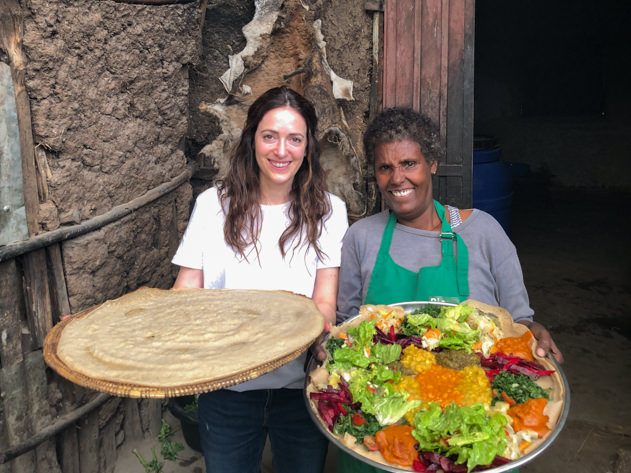
In addition to tasting the authentic Ethiopian cuisine, one of my trip highlights was attending a cooking class in Lalibela. This experience at Unique Restaurant with a lady called Sisko and her daughters was truly amazing. We had a lot of fun learning how to cook injera and other traditional dishes at her own place. After cooking a delicious meal, we had dinner all together and Sisko even performed the coffee ceremony (‘buna‘) for us. Immersing ourselves in a modest Ethiopian kitchen using charcoal cookstoves was a deeply humbling experience too and a great way to interact with locals and support them. 100% recommend!
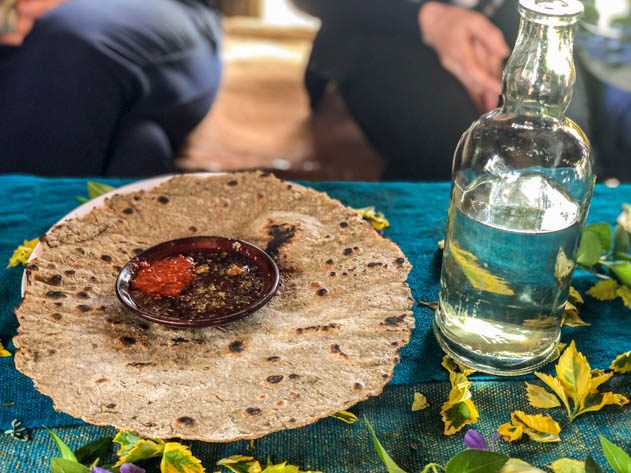
Later on, during our 10-day itinerary exploring southern Ethiopia, we also had a chance to try tribal products and see the tribes´ crops. For instance, when we met members of the Ari tribe near Jinka, we ate injera and bananas and also drank a shot of araki (an alcoholic beverage). A few days after that, we tried kocho (a fermented bread made with false banana –ensete– that can be served with honey or a spicy sauce known as ´data´) and a distilled drink in a Dorze village next to Arba Minch. Visiting the tribes of the Omo Valley was definitely another highlight of our trip to Ethiopia, but more on that below. 😉
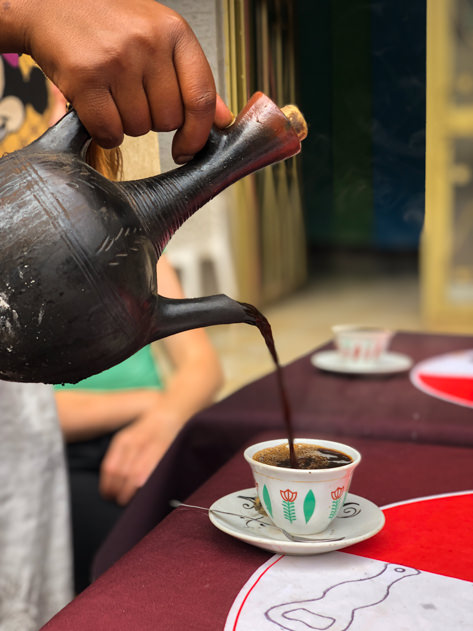
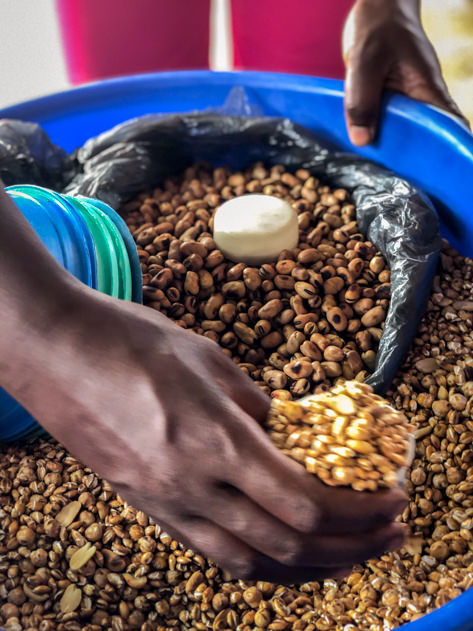
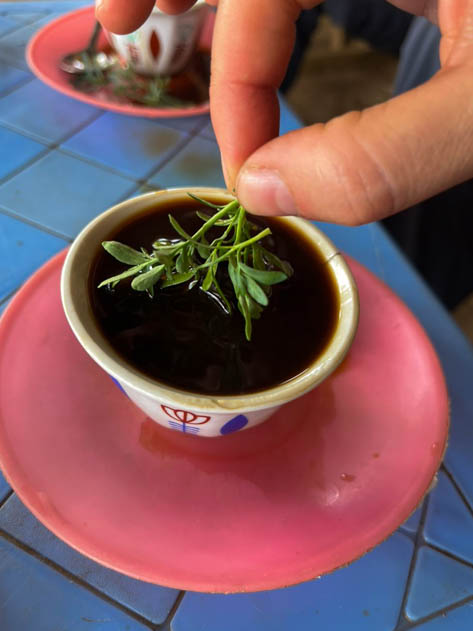
☕ Drinking Ethiopian coffee
In my humble opinion, closely followed by the Ethiopian food ranks the Ethiopian coffee.
Considered as the birthplace of coffee, it should come as no surprise that drinking the famous Ethiopian coffee called buna is a deeply-rooted tradition among locals in the country. To be precise, when we mention Ethiopian coffee we´re referring to the wild Arabica coffee variety.
The area around the bustling town of Jimma, which is the largest city in western Ethiopia, as well as its surrounding region are believed to be where the coffee plant was first cultivated. They remain one of Ethiopia’s main coffee growing hubs to this day. Should you want to learn more about Ethiopian coffee, you can visit the Kafa Biosphere Reserve near Bonga, featuring an interesting coffee museum.
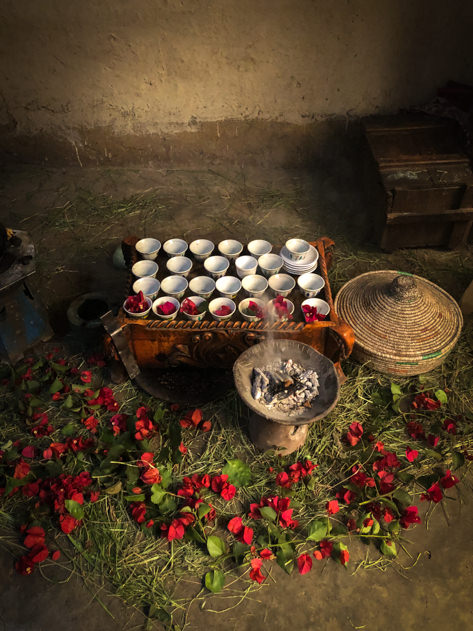


As a matter of fact, Ethiopians place high importance on their buna ritual, which is a traditional coffee ceremony to show respect and hospitality to family and friends. It always involves a female figure who first spreads fresh grass and flowers on the floor and table, before burning incense. While the aroma fills the room, she roasts, grinds and brews the coffee beans. Finally, using traditional clay coffee pots, the coffee is served in small cups (you’re normally expected to drink three of them), along with snacks such as ambasha (a sweet flatbread), bobolino (fried dough bread similar to a donut), kolo (roasted barley) or popcorn. Sometimes, you might also find rue (a herb known as ´tena´adam´) next to your cup of coffee.
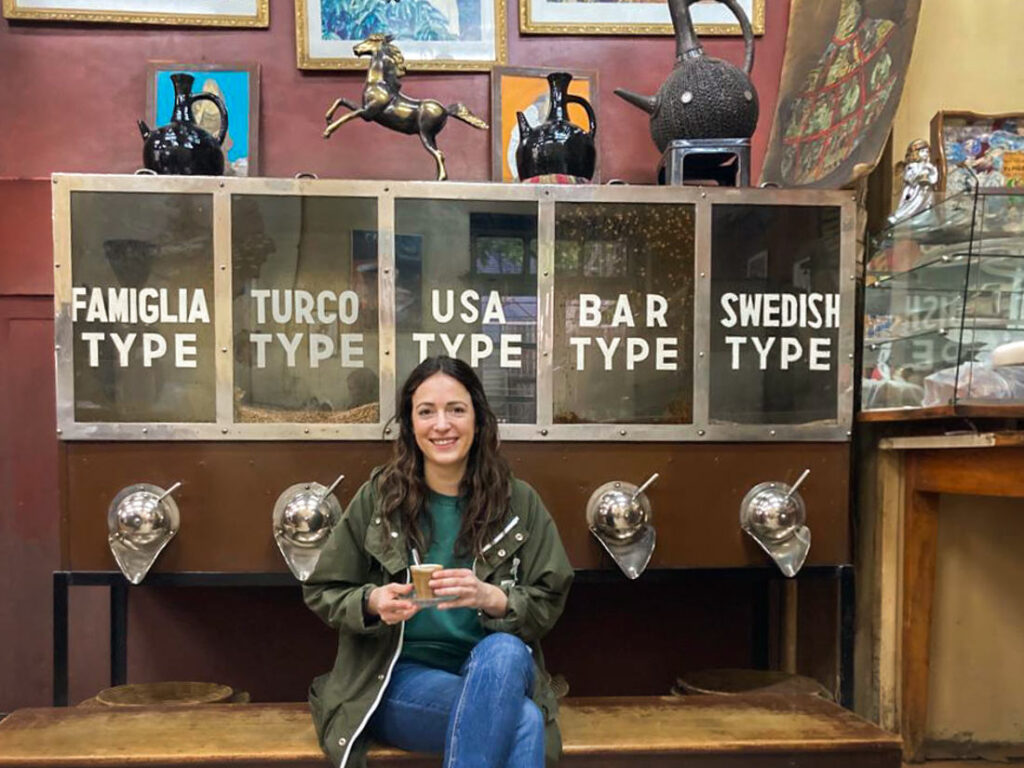
During our visit to Addis Ababa, we had the chance to check out various cafeterias to try the reputed Ethiopian coffee. My personal favorite was Tomoca and the good thing is that they have various branches in the capital of Ethiopia; I highly recommend this place!
Last but not least, during our road trip throughout southern Ethiopia, buna stops to drink some coffee were very much anticipated. Not only because they allowed us to take a break after endless hours of driving, but also because we found they were a fascinating way to interact with locals in deeply rural areas. Funnily enough, we often felt like rock stars since we were quickly surrounded by curious people staring at us as soon as we stepped out of the 4×4.
Coffee is truly everywhere in Ethiopia, so make sure to try it when you´re visiting. Let me know what you think and whether it makes it to your own trip highlights!
That being said, when traveling to Ethiopia, don´t forget to consider the health risks, including food poisoning and waterborne diseases. It’s important to take precautions like drinking bottled water and ensuring food is well-cooked. For extra peace of mind, you can calculate how much you would pay for your health insurance with the SafetyWing widget below.
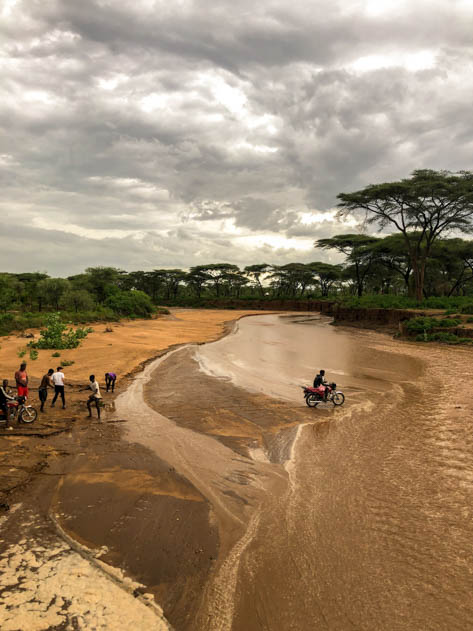
👣 Crossing a river by foot in southern Ethiopia
Even though crossing a river by foot might sound rather uninteresting at first, let me tell you the whole story. You will then understand why this experience became one of our trip highlights when discovering Ethiopia. 🙂
When we were exploring southern Ethiopia, we visited the Kara tribe near the village of Turmi. On our way back to the hotel, it started raining hard and we couldn’t cross the Keske river with our 4×4. A few hours before that though, we had crossed just fine because the road and the riverbed were dry.
You might think ´why don´t they have a bridge?´ Well, the thing is that the lack of appropriate infrastructure – from paved roads to bridges – is acute not only in Ethiopia, but in Africa in general, especially in rural areas. And actually, the rainy season from June to September makes this situation even worse. So if you´re traveling during those months and there´s a heavy rainfall, chances are you get stuck on your way somewhere or it becomes extremely difficult and dangerous to keep going any further.
Coming back to our story, we were stuck with other locals for quite a while on either side of the Keske river. We decided to wait and see whether the water level would come down. But it didn´t. And this was the month of April, so we weren´t even in the rainy season yet! In the meantime, some courageous locals were crossing the river, either by foot, by motorbike or by giving people a piggyback ride. Every time someone managed to make it to the other side, locals would cheer and we were actually having a good time watching this funny scene.
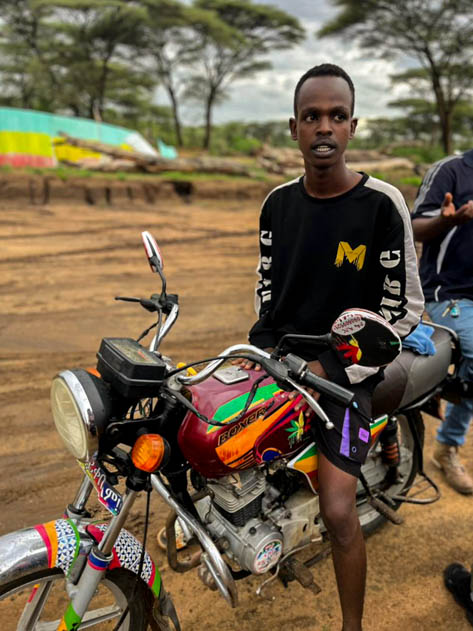
After half an hour or so, we decided to take matters into our own hands and reach the other side of the river. However, our guide Ahmed felt uncomfortable because he sensed that it wasn´t safe for us to do it. But we thought it would be manageable, safe, fun and memorable, so we went for it! We took our shoes and socks off, we rolled up our trouser cuffs and started crossing the river by foot. That being said, by the time we began traversing, we were surrounded by locals who were amused by four white girls rising to the challenge. They were both curious and courteous, and wanted to carry our stuff over the river. Slowly, walking on the muddy riverbed step by step, we succesfully reached the other side. Yay, mission accomplished!
Once we made it, a couple of young boys, Oita and Torbin, approached us and offered to drive us to the hotel. They took the four of us plus our guide on their motorbikes and kindly gave us a ride. They became our heroes and we had a beer with one of them afterwards, reminiscing the whole story and learning about his aspirations in life!
As you can see, the adventure of crossing the river was well worth it! Which is why it made it to my Ethiopia trip highlights.🙂
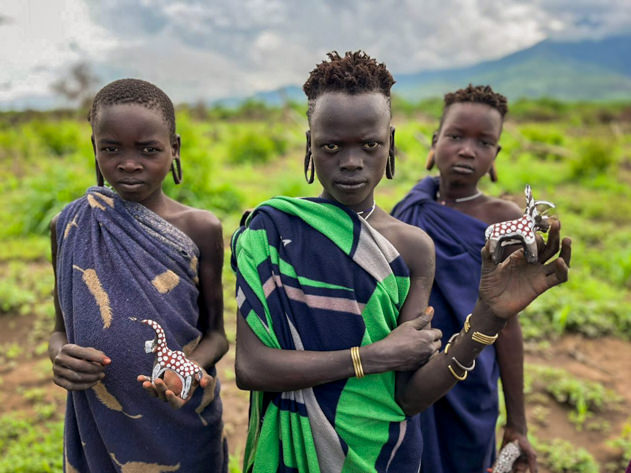
🪶 Interacting with the ethnic tribes from the Omo Valley
Meeting some of the tribal groups in the Omo Valley when exploring southern Ethiopia was another trip highlight.
To give you some context, the Lower Omo Valley in the southern part of the country is a melting pot of cultures in which to discover fascinating ethnic tribes. This remote corner of Ethiopia has been a cultural crossroads for millennia. The area is home to 16 ethnic groups, many of which are distinctly different from their neighbors.
From the Banna smoothly walking on stilts, to the Karo with their painted bodies or the Mursi with their lip plates, all these African tribes guard ancient traditions that run deep, many embracing animistic beliefs. If you’d like to learn more about them, the South Omo Research Center and Museum in Jinka is a great place to get started.
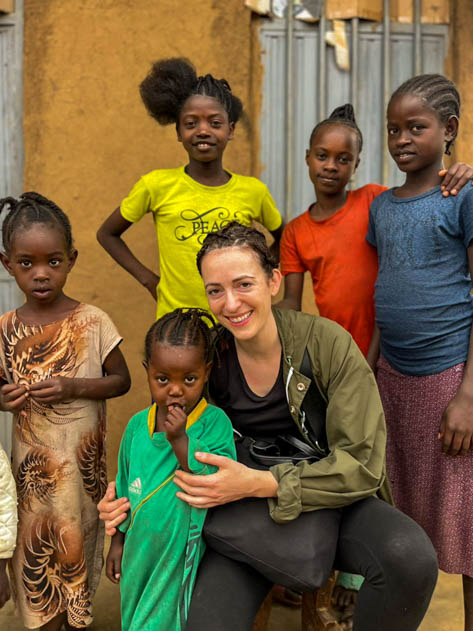
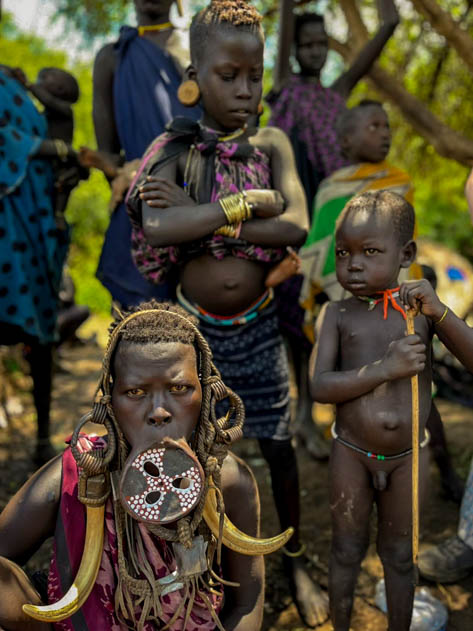
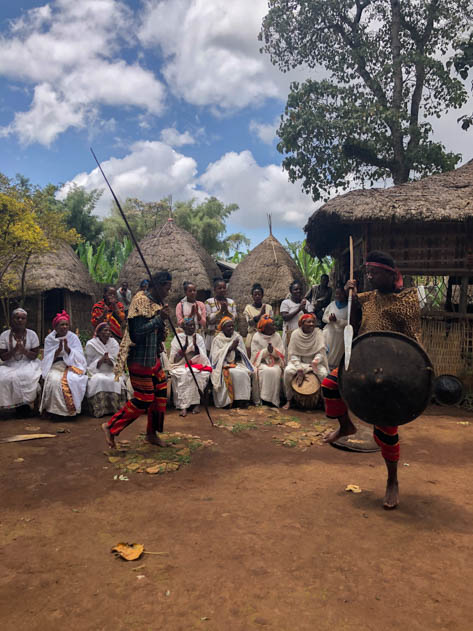
During our journey throughout southern Ethiopia, we interacted with the six African tribes listed below, although additional tribes such as the Dassanech, Nyangatom or Surmi (to name a few) exist:
- Ari: their tribe is the most numerous in the southern Omo Valley, with almost 300.000 people living mostly around the city of Jinka.
- Banna: they account around 27.000 members and are located around Key Afar for the most part. They are closely related to the Hamer, and they practice farming as well as hunting, although their most distinctive feature is that they gracefully walk on sticks with their bodies covered in white clay.
- Dorze: located in the misty mountains northwest of Arba Minch, the Dorze tribe accounts over 49.000 members. This tribal group is well known for their cotton weaving, although they also cultivate the land. Thanks to their skill with the false banana (ensete), they use not only it to build their cabins, but also to cook a fermented bread (kocho).
- Hamer: with a population of over 45.000, the members of the Hamer tribe can be found around Dimeka and Turmi. They are well known for their distinctive hairstyles and the ceremony of jumping over the bulls.
- Kara: the 5.000 members belonging to the Kara tribe are located northwest of Turmi, by the imposing Omo river. They master the art of body and face painting, usually with white clay.
- Mursi: around 7.500 Mursi live within the Mago National Park, near the Omo river. They are mostly nomads and pastoralists, although they also practice agriculture. Stick fighting, lip plates and body scarring feature among their best-known traditions.
For more information about the African tribes of the Omo Valley, read my post about exploring southern Ethiopia!
Visiting the markets and villages where the Omo tribes operate is a good way of understanding their way of living, despite the mistaken belief that these diverse ethnic groups live on the margins of modern society. Nevertheless, be prepared to question your entire beliefs system and even feel shocked or disturbed at times.
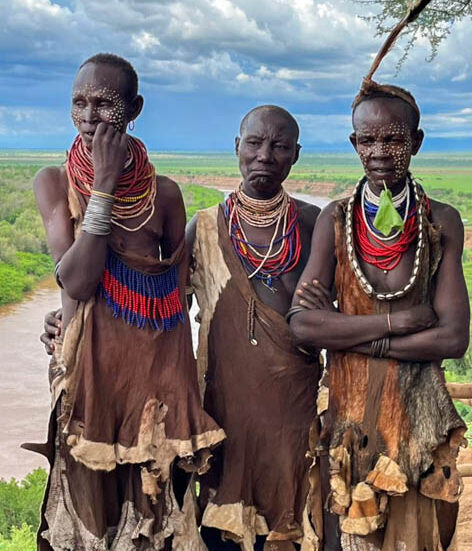
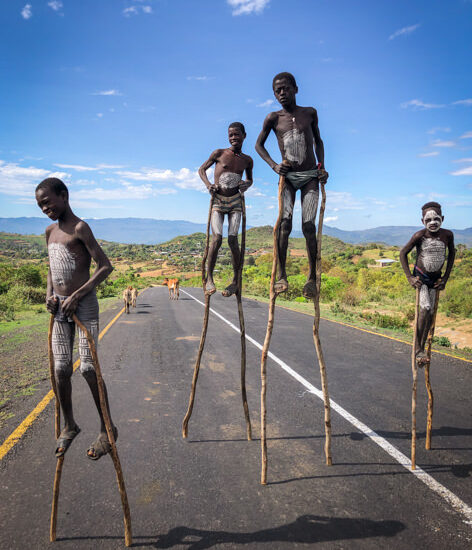
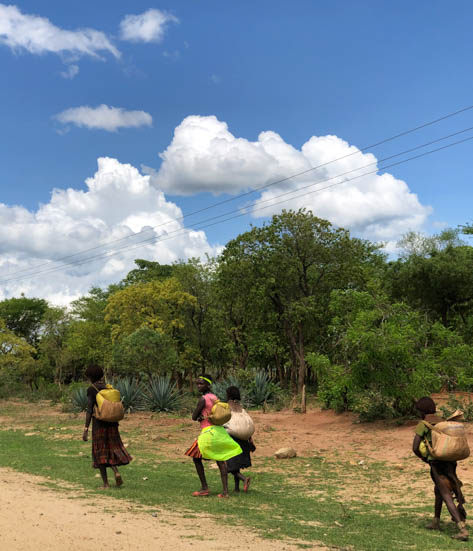
Another aspect worth mentioning is that interacting with these tribes can often be turned into a ‘human safari’. Regularly, groups of tourists come and go snapping pictures of the villagers, buying some homemade souvenirs and leaving shortly afterwards. A way to support responsible travel and avoid falling in that tourist trap is, for instance, to agree with your local guide to interact with the tribal group before even taking pictures, and to ask them genuine questions when touring their village. Another alternative for a more authentic experience and a deeper engagement with the local community would be to spend a couple of nights with a given tribe. During your interactions, despite your obvious curiosity and surprise, remember to be respectful with locals. For instance, always ask for permission when taking pictures.
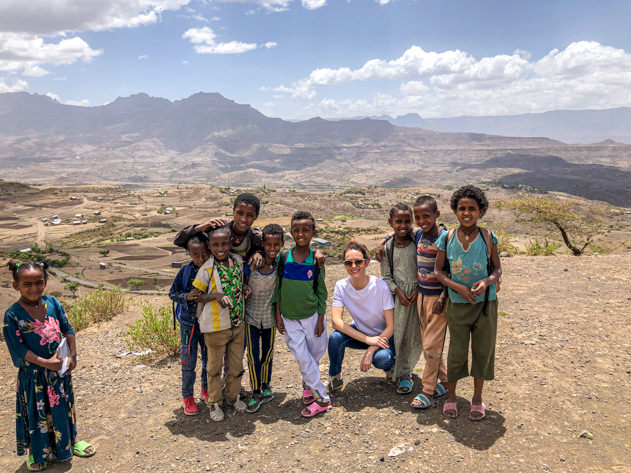
🇪🇹 Meeting the Ethiopian people
It might sound cliché, but in my opinion, interacting with the Ethiopian people was one of the best parts of our trip. I won´t hide that it was a rather intense experience at times, but I found that Ethiopians were curious, welcoming, smiling and friendly folks, especially kids.
Even though the number of tourists visiting the country each year is on the rise (1.2 million visitors in 2023), most Ethiopians, especially in the rural areas, will still be surprised to find you there. That is why you should be prepared to draw attention from the locals wherever you go. Chances are that, at some point or another of your Ethiopia trip, you will feel like a rock star because Ethiopians are constantly following you. This reminded me a lot of Pakistan, where I experienced the same feeling (people even wanted to take pictures with us!).


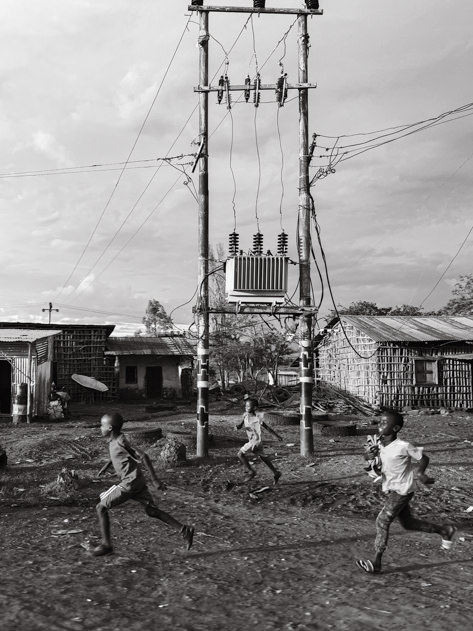
For example, whenever we would stop to have coffee in some rural village throughout southern Ethiopia, we would find ourselves surrounded by curious locals in a matter of seconds. They didn´t do much though, they just stared at us. 🙂 Luckily, we were accompanied by our guide and driver, who could speak the language and allow us to interact with the Ethiopian people around us.
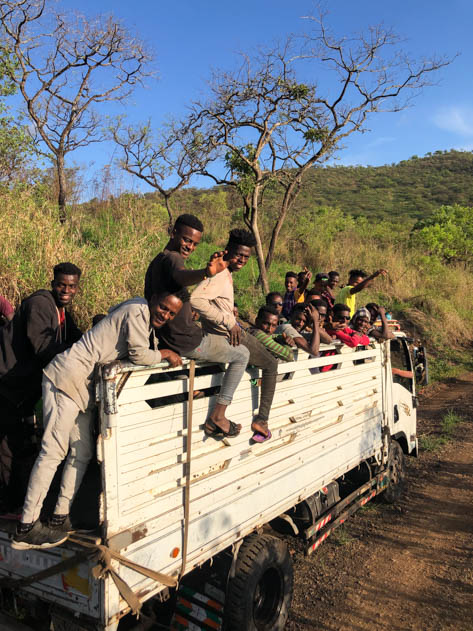
Another funny aspect, yet sometimes annoying, was constantly being chased by Ethiopian kids. Whenever they saw us, be it walking or driving, they would wave and point at us, they would call us ´Farenji´ or ´China´ (which was their way to refer to us as foreigners) or would say ´you, you, money, pen´. I don´t blame them though, given the level of poverty in Ethiopia in particular, and in Africa as a whole.
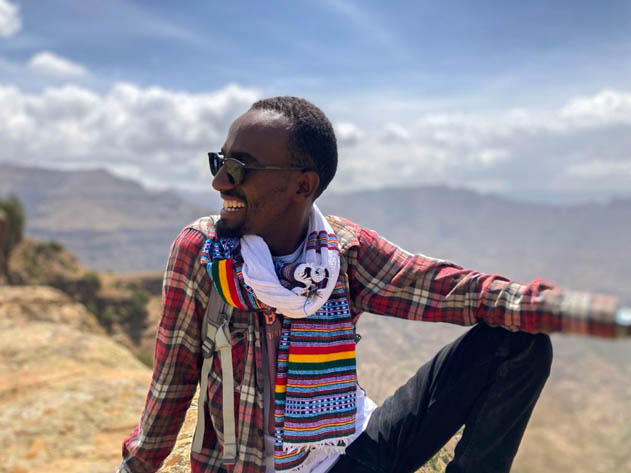
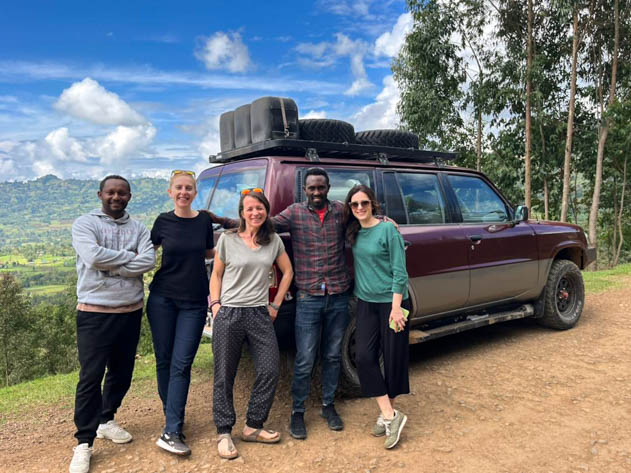
As I mentioned earlier, interacting with local Ethiopians was an excellent way to learn more about the diverse national culture and its intricacies. Again, thanks a ton to our dear guide Tegegne from Around Ethiopia Tours in Lalibela, and to Ahmed and Aki in southern Ethiopia!
Refer to my Ethiopia destination page for some helpful Amharic vocabulary to interact with local Ethiopians.
Do you like my content? Subscribe to my newsletter to stay tuned.
This is a wrap! These were my seven trip highlights and my personal favorites after traveling throughout Ethiopia for a couple of weeks. Have you visited this African country? If so, which were your favorite activities? Feel free to leave your questions and comments below.
***
✈️ Curious to know where I’ll be traveling next? ✈️
Stay tuned by following me on social media (Facebook, Instagram, X) and subscribe to my newsletter for regular updates!
In the meantime, safe travels around the world!
***
| GET READY FOR YOUR NEXT TRIP! |
|---|
| Browse my travel resources page to plan your upcoming trip. |
| Feeling adventurous? Book any outdoor activities worldwide with Manawa! |
| Get medical or health insurance via SafetyWing for extra peace of mind. |
| Looking for sports equipment? Feel free to browse my Decathlon profile for inspiration. |
| Use the comprehensive and helpful Anaya Touring or Lonely Planet travel guidebooks to plan your trip. |
| Book memorable activities and tours around the world with Get Your Guide. |
| Use your Revolut Card to pay in local currency when you’re traveling abroad! |

